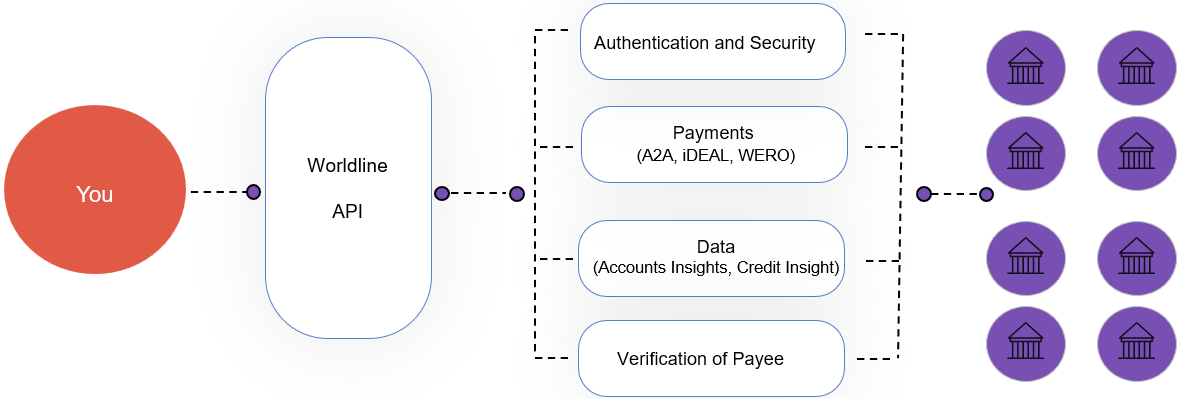ob-p-general
Here you will find implementation details of our Payment Products. All Payment Products except iDeal / iDeal 2.0 are based on Account-to-Account payments.
Account-to-Account Payments
A payment request can be initiated by a payer or a payee. To be processed by the payer's bank, the payment needs to be authorised by the payer to the bank. A payer's bank will apply a strong customer authentication to ensure payer's identity. This can lead to multiple flows in which a payment can be completed.
We support single SEPA, Instant SEPA, Domestic and cross-border payments with our Payment API. In addition, we can offer also an ability to initiate bulk payments, periodic or scheduled payments. To learn what kind of payments is supported by payer's bank, you should use Reach API once a day.
For faster integration and better user experience we offer a set of predefined screens that could be customised with your branding allowing to choose the payer's bank and handling the complexity of different PSD2 authorization flows (redirect / decoupled / embedded), so that you will be able to focus on your product and leave the boring stuff to us.
You can learn about payment execution progress either by polling the payment status by yourself or by subscribing to our push notifications. If you chose to subscribe to push notifications, we will continuously check with the bank on payment authorisation and execution progress and proactively notify you on the changes.
We also offer a Refund API allowing to refund historical payments.
Once you finished your implementation we recommend to go through the list of suggested testing scenarios.
Creditor Account Options
A merchant on the Worldline Open Banking Platform, can be setup as either a E-Commerce or p2p merchant. When E-Commerce is selected, the Open banking Platform will initialize payments using a predefined creditor account. When p2p is selected the merchant can specify the creditor account in the post payments API call.
For E-Commerce merchants an additional service is available: In case you act as a payee and hold multiple bank accounts, you may want allow Worldline to choose the account that will be credited as a result of the payment. In case you hold bank account with the same bank as the payer, this account will be prioritised to ensure quick intra-bank settlement and reduce transaction fees paid to the bank. If you are interested, please request to switch on the Dynamic Creditor Account Lookup feature for you during the integration phase.
iDEAL Payments
We allow banks to become acquirers for iDeal 2.0 transactions in Netherlands. That means that merchants who are the clients of the bank will be able to initiate iDeal payments using our Payment API.
You can learn about payment execution progress either by polling the payment status by yourself or by subscribing to our push notifications. If you chose to subscribe to push notifications, we will continuously check with the bank on payment authorisation and execution progress and proactively notify you on the changes.
We also offer a Refund API allowing to refund historical payments.
Need help?
Please get in touch with us and we will help you to integrate our APIs.










